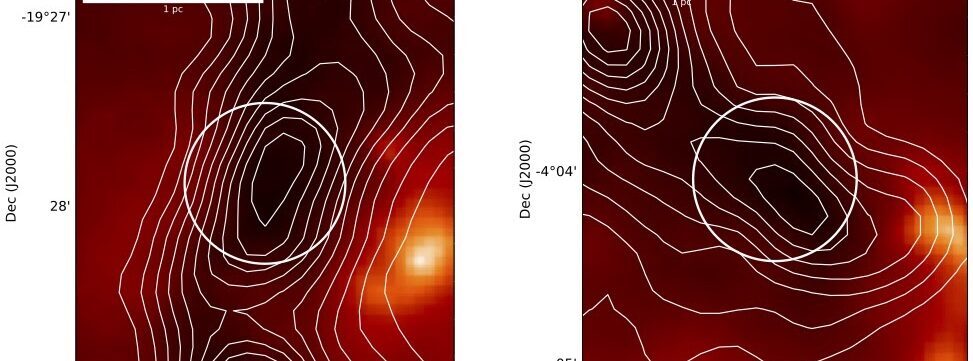
CoCoA: A search for high-mass stellar progenitors
Understanding star formation is one of the most fundamental problems in astrophysics. Most of the stars in the Universe form in dense clusters. Low-mass stars, like our own Sun, are much more commonly formed in star clusters. High-mass stars, that are at least eight-times more massive than the Sun, on the other hand, are very rare. High mass stars live a short, but very wild, life characterized by their strong stellar winds, and sometimes a death in supernovae explosions.
Haystack Research Scientist Thushara G.S. Pillai started the CoCoA project to perform a systematic search for the earliest phase of high-mass star formation that builds on the ATLASGAL survey at 870 mu wavelength that covers the entire inner Galactic plane. The clumps extracted for the survey are massive, dense, and devoid of infrared sources up to 70 mu wavelengths. Using sensitive high-resolution ALMA data towards all potential candidate starless high-mass clumps within 5 kpc, CoCoA will reveal if there are any high-mass cores embedded within these clumps. CoCoA will deliver information on the internal density and temperature structure of high-mass cores, and robust constraints on the lifetimes of the elusive early phase of high-mass star formation, at an unprecedented level of detail. CoCoA is funded by the NSF.